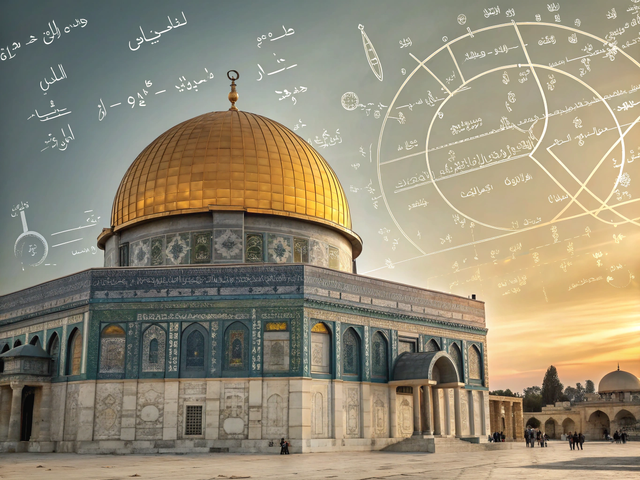Hash and Dome: Two Forms of Human Inscription in the Pursuit of Eternity
When the 778,104th block of the Bitcoin network completed another hash collision (the process by which miners compute to find a hash value meeting specific conditions, known as "mining") within the precise gears of the SHA-256 algorithm (the cryptographic hash function used by Bitcoin, ensuring the immutability of transactions), the golden dome of the Temple Mount in Jerusalem refracted sunlight—unchanged for three millennia—into diamond-like glimmers. This juxtaposition of temporal dislocation is no coincidence. The cryptographic labyrinth of blockchain (referring to the complex mathematical encryption system underpinning Bitcoin) and the geometric sublimity of religious architecture (referring to the sacred aura created by precise proportions and symmetrical designs) are, at their core, both vows carved into the void by humanity's sharpest tools of the era.
The hash function (a mathematical process that converts data of arbitrary length into a fixed-length unique value) solidifies the flow of time into hexadecimal amber (referring to Bitcoin block hashes presented in hexadecimal form, like fossilized remnants), where every attempted nonce (a random number adjusted by miners to generate a qualifying hash) is a miner’s fleeting triumph over the law of entropy (the second law of thermodynamics, which states that systems tend toward disorder, while mining is an artificial creation of order). Meanwhile, every gilded tile of the sacred dome is a believer’s topological attempt (referring to the mapping of higher-dimensional sacred space through architectural structure) to anchor sacred geometry (the mathematical proportions in religious architecture symbolizing cosmic order) onto earthly soil.
Satoshi’s Merkle tree (a data structure in the Bitcoin blockchain used for efficient transaction verification) and the Kabbalistic Tree of Life (a symbol in Jewish mysticism representing the structure of the universe) both construct immutable narratives of eternity: the former relies on the cold precision of mathematical consensus (the algorithmic and computational voting mechanism of the Bitcoin network), while the latter depends on the fiery cohesion of collective imagination (the social consensus of religious belief).
From the cuneiform ledgers of Ur (one of humanity’s earliest written records, used for commercial accounting) to the encrypted wax seals of Byzantium (ancient techniques for ensuring the confidentiality of correspondence), from the flying buttresses of Gothic cathedrals (medieval architectural feats symbolizing humanity’s pursuit of divine heights) to the distributed ledger of blockchain (Bitcoin’s decentralized database), civilization has always repeated this eternal gesture—using the most advanced technological language of the time to weld perishable flesh to some transcendent order (eternal principles beyond the physical world). The 5,500 megawatts of electricity consumed by Bitcoin miners and the calloused knees of pilgrims are, in essence, the same currency humanity pays to resist temporal entropy (the disorder and decay brought by time).
On the day quantum computers (supercomputers capable of cracking current encryption algorithms) finally break SHA-256, the gilded layers of the Dome of the Rock may also crumble in the fires of war. Yet new veins of ore exposed in the earth’s fractures will give rise to even more complex encryption algorithms, and the dust atop the ruins will coalesce once more into new sacred domes. This Sisyphean cycle (referring to the endless, futile labor of the Greek myth, symbolizing humanity’s doomed yet persistent pursuit of eternity) stands as the most tragic and romantic testament to our nature: we know eternity is unattainable, yet we persist in forging the technology and faith of each era into upward-climbing steps.
